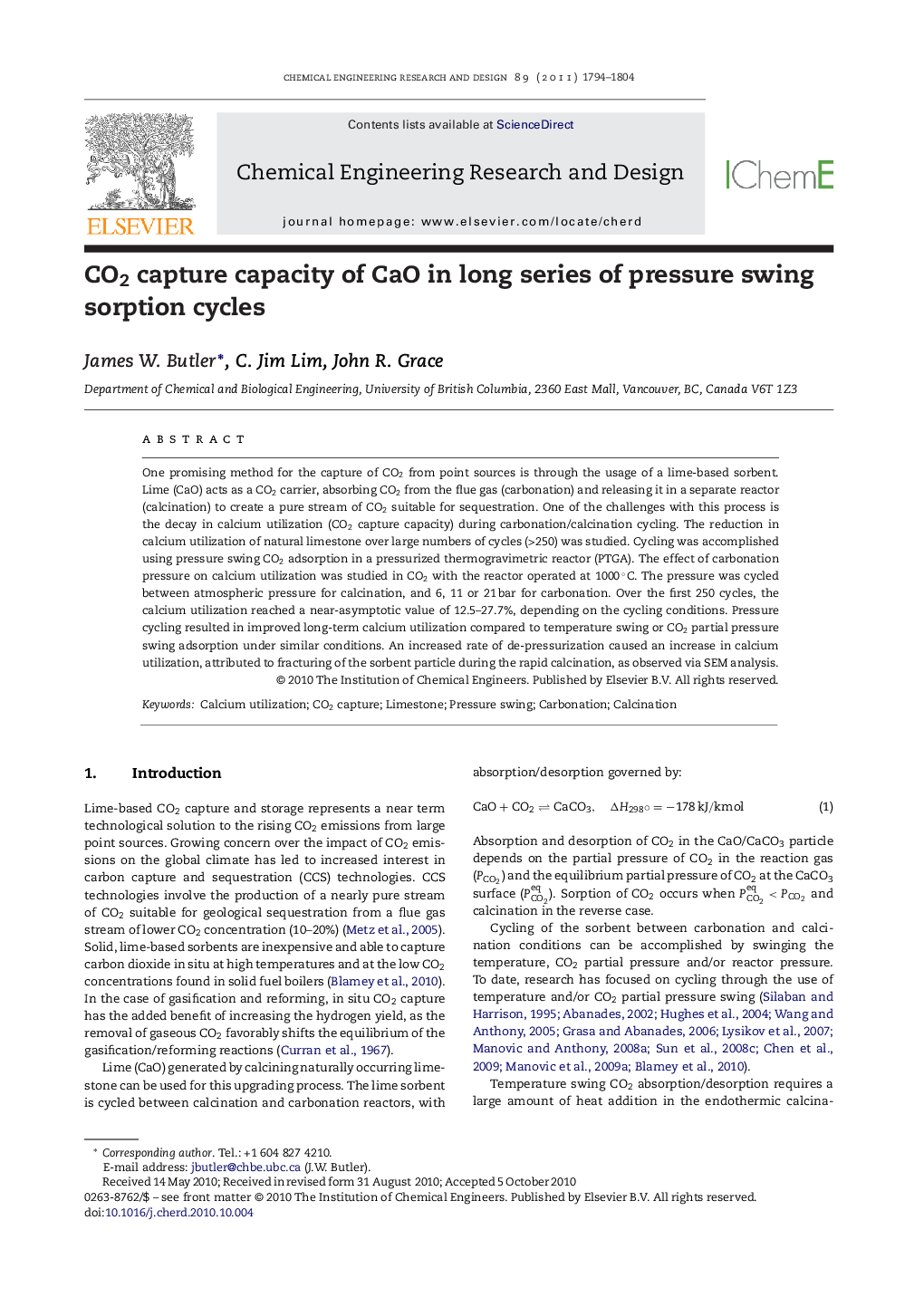| Article ID | Journal | Published Year | Pages | File Type |
|---|---|---|---|---|
| 622063 | Chemical Engineering Research and Design | 2011 | 11 Pages |
One promising method for the capture of CO2 from point sources is through the usage of a lime-based sorbent. Lime (CaO) acts as a CO2 carrier, absorbing CO2 from the flue gas (carbonation) and releasing it in a separate reactor (calcination) to create a pure stream of CO2 suitable for sequestration. One of the challenges with this process is the decay in calcium utilization (CO2 capture capacity) during carbonation/calcination cycling. The reduction in calcium utilization of natural limestone over large numbers of cycles (>250) was studied. Cycling was accomplished using pressure swing CO2 adsorption in a pressurized thermogravimetric reactor (PTGA). The effect of carbonation pressure on calcium utilization was studied in CO2 with the reactor operated at 1000 °C. The pressure was cycled between atmospheric pressure for calcination, and 6, 11 or 21 bar for carbonation. Over the first 250 cycles, the calcium utilization reached a near-asymptotic value of 12.5–27.7%, depending on the cycling conditions. Pressure cycling resulted in improved long-term calcium utilization compared to temperature swing or CO2 partial pressure swing adsorption under similar conditions. An increased rate of de-pressurization caused an increase in calcium utilization, attributed to fracturing of the sorbent particle during the rapid calcination, as observed via SEM analysis.
Research highlights▶ Pressure swing cycling increases residual calcium utilization in limestone sorbents. ▶ Residual calcium utilization of 12.5–27.7% was obtained. ▶ Increased pressure during carbonation increases residual utilization. ▶ Initial decay in utilization followed by a brief increase due to “self-reactivation”. ▶ Rapid de-pressurization fractures particle and increases residual utilization.
